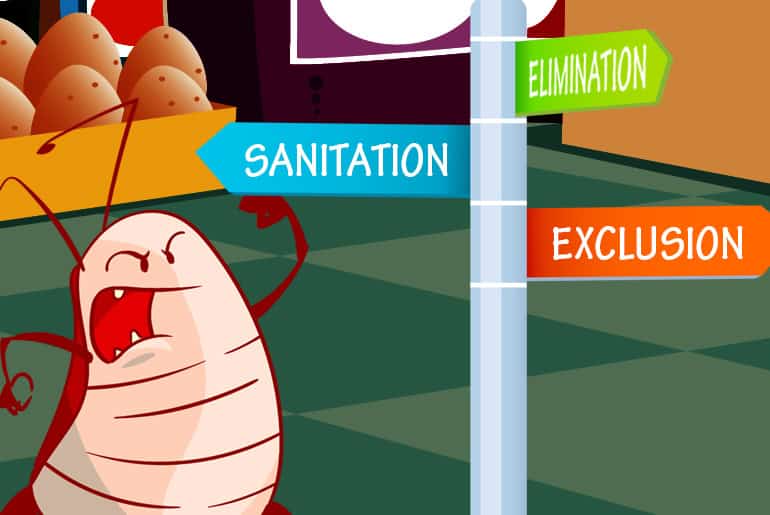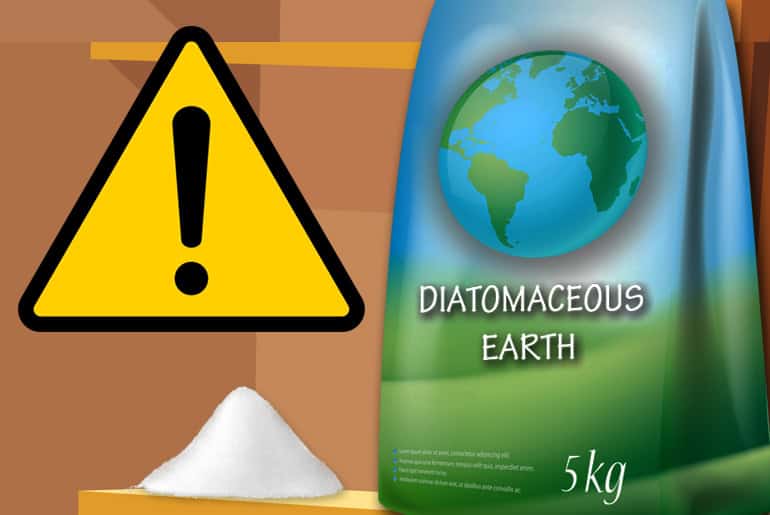Nobody invites cockroaches into their home. But if you’re beginning to see more and more of them, isn’t it time they were properly asked to leave?
In this short guide, you’ll learn to say goodbye to cockroach guests by sending them on a deadly little trip—via a product called a roach motel.
The time has come to send roaches packing.
So let’s go.
The 2 Types of Roach Motel and What They Do

The idea of roach motels has been around for at least a hundred years, but it took a 1970’s ad campaign from Black Flag to give these tiny death chambers a name good enough to stick.
At its simplest (and they’re all simple) a roach motel is a box that roaches either eat from or crawl into, and voila—they’re dead within a few days. Roach motels are inexpensive, don’t require much instruction, and depending on how you use them, can work really, really well.
There are a couple of different kinds, though. They kill roaches in different ways. And if you buy the wrong one or buy with unrealistic expectations, you could find yourself disappointed with the results. Let’s take a look:
1. Roach motels that capture roaches with glue
Roaches check in, but they don’t check out.
Also known as glue or sticky traps, these pesticide-free, fold-to-assemble roach motel traps use scents to attract roaches and a layer of glue to permanently stick them down. They’re not made for eradicating severe infestations, but work well for catching stragglers and heading off problems before they get too bad.
Beside their straightforward, merciless killing abilities, sticky motels have a special feature: They allow you to examine the roaches that they kill.
Disgusting as that may sound, examining and counting the roaches in your traps can reveal the true extent of a cockroach problem, help you discover unseen hiding spots, and tell you where to focus your efforts should you need to use more aggressive tactics.
Exterminators call this valuable technique insect monitoring, and if you’re going to buy a glue motel anyway, you may want to take advantage of it.
Why?
You can monitor roach populations before and after treating for pests. Not sure you have enough roaches to justify calling an exterminator to begin with? Set out some sticky traps to get a sense of the situation. Concerned that roaches will come back? Set out a sticky trap to see if they’re still around or their numbers are increasing.
Monitoring helps you keep bugs under control.
2. Bait motels that poison roaches then send them on their way
Roaches stop in for a poisoned snack, then take other roaches with them when they die.
This kind of roach motel doesn’t kill with sticky surfaces, but with a bait—a potent insecticide disguised as food. Roaches eat the bait and escape… but only temporarily.
Designed to have a delayed effect, the bait kills the roach slowly, allowing it to return to its nest before it dies.
Why is that often better than killing it instantly?
Because slowly dying roaches continue to spread the poison in their feces and the material they spit up. Other roaches eat those and die, too. This ability to kill roaches that never even came near the roach motel, transforms these little discs and boxes into serious, long-term solutions for tackling bigger infestations.
Do Roach Motels Work?

Roach motels do work, but not always in isolation, and not for every problem. They also take more time to work than near-instant products like cockroach sprays, so patience is important.
Importantly, for serious infestations, you won’t want to rely on roach motels exclusively:
If you have roaches scurrying brazenly around your home, getting into your food, your clothes, your drains, and your bed… if you find them swarming when you open a drawer, or infiltrating your electronics—if you have that level of infestation (see “How Do You Know if You Have a Roach Infestation“), you’ll want to hit the bugs with a more comprehensive plan.
But if you have an early roach problem—the kind you catch before the roaches begin to take control, roach motels can be a highly useful tool. And if you use them for cockroach monitoring—well, at that point you’re applying pro-level skills.
How to Use Roach Motels
Roach motels are popular in part because they’re so simple to set up and use. The sticky-type traps only take a minute to put together, and bait traps only need to be unsealed.
Monitoring, if you decide to do it, takes some additional record keeping at the outset (like labeling traps with a marker and jotting down the information in a notebook). But aside from that, you can begin placing roach motels pretty much right away.
So, where to put them?
Placement is key with these devices. You may think cockroaches use your house like a giant race course, but individual roaches don’t typically wander far from a favorite place. If you miss those places, you’ll miss many roaches too, so give your placement some thought.
For most homes, that means heading into the kitchen, bathroom, and basement, where roaches like to hang out most. Then when you get there, examining surfaces for the obvious signs that cockroaches leave behind.
You’ll want to look for signs like roach droppings, smears, and stains, egg cases, or discarded bits of shell. If you’ve actually seen roaches crawling around, those are obvious areas to target, too.
Since roaches aren’t particularly fond of easily accessible spaces, a step stool and knee pads can help you do a better job reaching areas bugs live and hide.
And as you poke around, pay special attention to cramped, hidden areas, especially near food and water, like rarely-seen kitchen crevices, walls under sinks, spaces underneath appliances, in corners, and along the edges of walls (the routes roaches often take to get around). The lures in roach motels won’t attract them if they’re placed too far away.
Buy more than a few
Solving a cockroach problem is not the best time to be stingy, so buy enough motels to hit the problem hard. Most are fairly inexpensive, and most are sold in packs.
If you’re using bait-type roach motels, they’ll last until the bait runs out or the insecticide gets too old.
If you’re using sticky roach motel traps, check them every few days or so—and more frequently if the situation is really bad.
You’ll want to replace sticky motels when they fill up, leaving little sticky surface to do the job. If you’re using them for monitoring, you’ll want to gather them up at regular intervals, and examine them at the same time.
Tip: Used-up poison and sticky-type roach motels should be thrown away in sealed garbage bags. And contrary to what you may have heard, don’t leave poisoned roach bodies lying around for other roaches to consume (they could get your pets or children sick). Instead, if you’re using poison-type traps, just put out a couple more. It’s a safer way to deliver more insecticide.
Roach Motel Reviews: Main Contender Showdown

Sticky Glue Motels
1. Black Flag Roach Motel
The “go-to” cockroach motel for nearly 45 years, the Black Flag Roach Motel is the ideal glue trap for the squeamish, obscuring its cockroach catch unless you really want to peek inside.
The motel is compact and wood-grained to blend in with your furniture or floor. It’s not so great for monitoring, but does a fine job catching roaches.
Tip: When the bottom of the roach motel is covered with bugs, simply flip it over to catch more on the top sticky surface.
2. Exterminator’s Choice Glue Sticky Traps
For a Made in the U.S.A, environmentally conscious cockroach motel that works great for extermination and monitoring, Exterminator’s Choice Sticky Traps are the ones to get.
The bait is a natural, pheromone-free blend, the trap is designed for insect-sized creatures only, excluding larger critters like mice that you may want to tackle in other ways, and the trap’s cardboard is made from recycled material, making it a greener, more thoughtful choice.
3. Victor Roach Pheromone Trap
Though Victor Roach Pheromone Traps can be used like any other insect trap, they’re designed for monitoring. Each unit is printed with a record-keeping aid, and the traps are sold in bulk, making them especially useful for commercial and long-term applications.
In addition to a naturally-scented lure embedded in the glue, Victor’s product provides a special lure that attracts roaches with a pheromone.
4. Terro Roach Magnet
Another pheromone-based option is the Terro Roach Magnet. It’s very similar to the Victor Pheromone Trap but lacks the additional food scent.
At about $1 per trap, Terro Roach Magnets are an affordable way to monitor an infestation and start trapping the most active roaches overnight.
Poison Bait Motels
1. Combat Roach Motel (for Small Roaches)
Combat Max attracts roaches with a powerful Fipronil-laced bait. While Fipronil can kill both large and small cockroaches, only smaller roaches (like the Brown-banded and German cockroach) can squeeze into the the roach motel itself.
2. Raid Roach Motel (for Large Roaches)
Raid Double Control Roach Bait packs a double whammy against cockroaches, using two different food baits to deliver its insecticide. Like Combat, it focuses on a single size of cockroach, in this case, large species like the Oriental, Smokybrown, and American cockroach.
3. Hot Shot Liquid Roach Bait (for All Cockroaches)
Hot Shot Liquid Roach Bait contains a strong bait formula and an equally strong insecticide to bring roaches running within hours and start eliminating the infestation in the first week.
Roaches check into Hot Shot’s product for the promise of not only food, but water (even more attractive to cockroaches when resources are scarce). Both deliver the powerful pesticide that eliminates roaches after they feed and leave.
What’s the Best Roach Motel for You?

The right roach motel—glue or bait—depends on what you need it to do. Both types can be effective. Both are easy to use. And neither pose significant dangers for children or pets, though you’ll want to place them well out out of kids’ and animals’ way.
The question you will want to ask is whether, given your particular situation, cockroach motels alone will be enough. And if you try them first for monitoring or managing minor, occasional infestations, they’re the perfect tool to answer that.
If you still have a cockroach problem after using roach motels, there are more aggressive products and techniques that will do the job (see “How to Get Rid of Cockroaches Forever“).
But for now, go get ’em.
And don’t let those roaches check out!
Frequently Asked Questions
Cockroach baits and roach motels attract the roaches that are already there; they aren’t going to bring more roaches into your house. You might think you’re seeing more roaches after putting down bait but you’re simply noticing the ones that have been hiding all along.
Remember: the roaches you see are only a sign of many others hiding nearby.
It depends on the size of the roach problem and the type of roach motel, but roach motels could last anywhere from a few days to a few months.
Sticky motels like Exterminator’s Choice or Black Flag for example, should continue to attract roaches for a few months or more, or until they fill up and there are no sticky surfaces left.
Baited roach motels are better-suited to being left out for long periods. Unless you have a truly massive infestation, it will take a while for roaches to completely gobble up the bait, and the insecticide will probably last a year.
Written by Andrew Martin. Reviewed by James Miksanek, PhD.
Disclaimer: This page is strictly for informational use. When using insecticides, keep in mind—the label is the law. Insecticides should be applied correctly and safely when needed, and according to the laws of your state or country.

Andrew Martin
Writer/Publisher
Andrew writes for, and along with his daughter, publishes Cockroach Facts. You can read more about him here.

James Miksanek, PhD.
Science Editor
James is an entomologist and adjunct professor of biology. His background is in biological control, and he has a passion for ecology and environmental science. His research has addressed a variety of topics including pest control and the management of invasive species. You can learn more about our contributors here.
Sources
- Roach Trap and Bait Placement Guide. Seabright Laboratories. Retrieved from http://www.seabrightlabs.com/place.htm


















